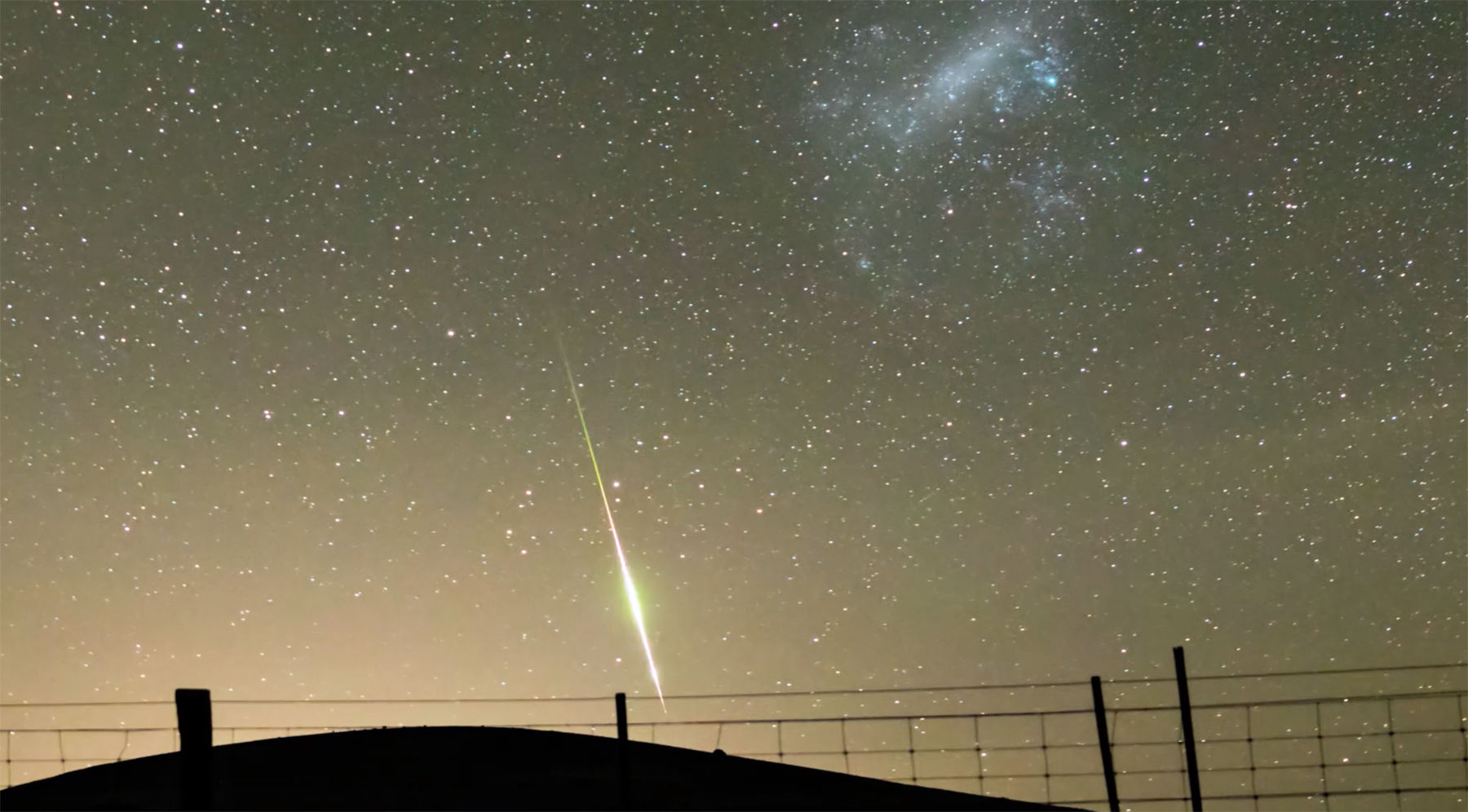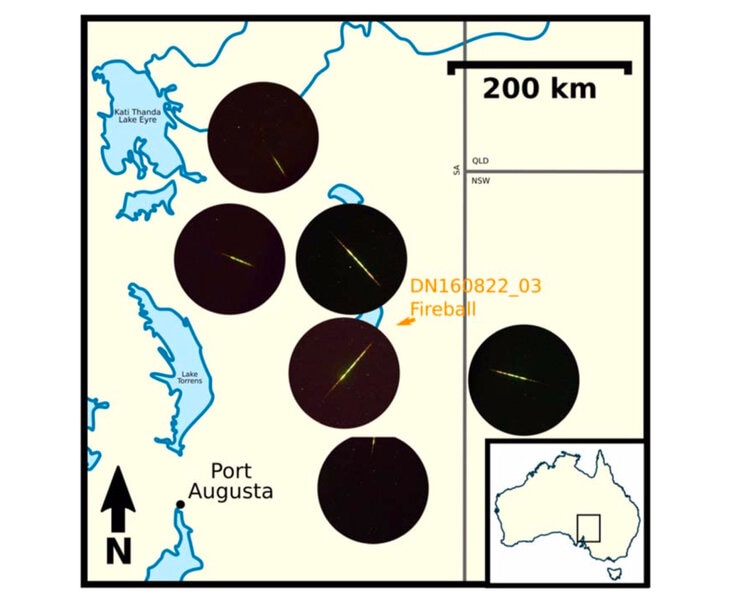Create a free profile to get unlimited access to exclusive videos, sweepstakes, and more!
Earth had a minimoon, but then it burned up in our atmosphere

I read a paper that came out recently on a topic that had never occurred to me: For a while, the Earth had a temporary moon… but then it burned up in our atmosphere as a meteor.
When you go outside at night at a dark site and keep your eye on the say, chances are you'll see a handful of meteors every hour. These are called sporadic meteors, basically bits of rock or metal from asteroids created in impacts long ago. Ejected from the collisions, these pieces go off on their own orbits around the Sun, and sometimes their orbit intersects ours. If they cross Earth's orbit at the same time we happen to be there, they ram through our atmosphere and burn up, creating a "shooting star."
Sometimes we get meteor showers, which are in general due to material sloughed off by a comet that gets near or crosses Earth's orbit. Every year we plow through that debris stream, and we get lots of meteors.
When you see a meteor they zip pretty rapidly across the sky, burning up 90–100 kilometers above the ground. How fast hey move depends on their orbit around the Sun. If their orbit is much like Earth's, they can "catch up" to us, and burn up relatively slowly. If they orbit in the opposite direction we hit them head-on, and the motion is really fast.
Every now and again, though, a meteor is seen to move exceptionally slowly across the sky. If they come from outside the Earth-Moon system, orbiting the Sun, they have to come in at a speed of at least 11 kilometers per second, Earth's escape velocity. That's just the way the physics works out. Anything coming in slower than that has to have been in actual orbit around the Earth first, and not coming from deep space. It's the only way for that to happen.
An object like this is called a temporarily captured orbiter, or TCO — colloquially a minimoon which is cute — and is defined as object that orbited the Earth at least once before impact (there are ways to define that, including the shape of its orbit around the Earth). They're certainly possible, but extremely rare (only about 1 in a thousand meteors are likely to be from TCOs), and generally pretty small objects (simply because those are way more common in space than larger ones). Some predictions show that there may be many of these orbiting the Earth at any one time, but usually smaller than a meter. That's small, and very hard to find unless it happens to pass pretty close. Otherwise it's currently too faint to spot.
Based on this, a team of astronomers looked at data from the Desert Fireball Network, a collection of cameras spread across western and southern Australia, designed to see meteors, triangulate their trajectories, and provide enough information to be able to backtrack that to determine a rough orbit of the object before it entered our atmosphere. Given the number of bright meteors seen by the network, the team expected to find one or two TCOs among them.
And they did! On 22 August 2016, six of the cameras caught a very slow-moving meteor near Lake Frome in South Australia. It came in very nearly vertically, which is unusual for an interplanetary (or artificial) object. The observations caught it when it was 74 km up, and ended when it burned up about 5 seconds later at an altitude of 24 km. It was initially moving at just under 11 km/sec, and slowed to just under 4 before it burned up. The mass is estimated to be about 12 kilograms before it hit us, which means it was small, maybe 20 centimeters wide (about the size of a volleyball, assuming it was rock; if metal it would be even smaller). Given all this, and the pre-impact trajectory, they found it has more than a 95% chance of being a TCO.
Cooool. The only problem is that it's very difficult to backtrack the orbit very far. Getting an object that starts off orbiting the Sun to change its orbit enough to orbit the Earth is hard. Galileo actually showed this: An object passing by the Earth will leave with the same energy it came in with. So anything moving too fast — which is the case the overwhelming majority of the time — will just pass right on by. One way to change this is on very specific trajectories, where, for example, it passes the Moon at just the right distance and angle to slow enough for the object to be captured by Earth. Another way is if it passes by a pair of special gravitational points in Earth's orbit called the L1 and L2 points. These can funnel objects into the right trajectory to be captured.
Even then the orbit is generally fairly chaotic. It can dip close to the Earth, then swing back out to the Moon, and when it does its orbit gets tugged by various forces, changing it. Objects like this tend to come it at just under Earth's escape velocity, so any change to the orbit is likely to eject it from the Earth — the fate of a TCO is not necessarily burning up, as it could orbit for a while then get ejected from the Earth-Moon system. One object, 2006 RH120, orbited the Earth for 11 months from 2006–2007 before getting kicked out by such an interaction. It's the only other known TCO besides the one that burned up over Australia.
It's amazing to me that we can get data like this; just a couple of decades ago this would've been extremely difficult. But now networked cameras can see all sorts of things, and the more we watch the sky the more likely we are to see all the different beasties up there that go pffffft in the night. As we become more of a space-faring species understanding these objects will be ever-more important, too.



























